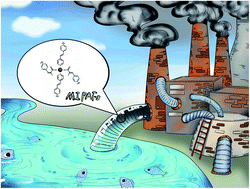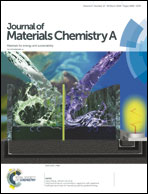Constructing synergistic groups in porous aromatic frameworks for the selective removal and recovery of lead(ii) ions†
Abstract
Numerous strategies have been investigated to fix functional groups onto porous frameworks for potential applications. However, their random distribution, especially when consisting of two or more fragments, will severely curtail the performance and restrict practical utilization. Here, molecular imprinting technology is incorporated into the construction of a porous skeleton to prepare porous aromatic frameworks (PAFs) with synergistic groups. Two functional groups (pyridine ring and carboxyl group) are bound together in a hierarchically porous material and cooperate to interact with lead ions. Due to a synergistic effect, the PAFs exhibit a considerable uptake of Pb2+ ions and give the highest selectivity among all reported adsorbents. In addition, the PAF materials and conventional polymers can be integrated into a commercial polyvinyl chloride pipe as an interior coating for the selective extraction of Pb2+ ions. After treatment with the composite coating, the concentration of the Pb2+ ions in the outflow decreases to ∼0.008 ppm, satisfying the requirement of the U. S. Environmental Protection Agency for drinking water (0.015 ppm). The insoluble nature of the PAFs leads to the facile elution and recovery of the Pb2+ ions with high purity (∼98.60%).



 Please wait while we load your content...
Please wait while we load your content...